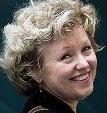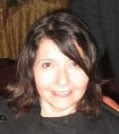The publishing industry, like the rest of the media world, tends to chase trends. Case in point: Books on storytelling. A rash of them have surfaced in the past several months.
They range from movie mogul Peter Guber’s Tell to Win (Crown Business), a celebrity-peppered primer on the basics of storytelling for business purposes, to Learning Little Hawk’s Way of Storytelling (Findhorn), which is steeped in Native American wisdom and practices around the art of the verbal narrative.
I had my own personal encounter with the hot topic of storytelling while preparing for the SDWW launch party. Most everyone read from their books. I decided to tell a story about how, while researching my book, Day Trips from Orange County, I discovered a magic point, one seemingly impervious to the laws of nature, in Southern California. I came up with a slew of charming moments, colorful scenes and high and low points around the incident. But when I timed what I thought was just a little tale, it clocked in at 15 minutes.
It was supposed to be five.
How could I possibly tell this story in such a short time?
Now keep in mind that I have spent my life telling stories. I have my growing up Italian-American stories, how I got started as a rock critic story ( which I have reiterated to many journalism students), how I moved to California stories, how I met my husband story, my travel to India stories, favorite and not-so-favorite celebrity interview and rock concert stories, the ups and downs of working in dot.com stories, my book writing stories and on and on. I’ve got hundreds of them. We all do. That’s why memoir (speaking of publishing trends) is taking up more shelf space, real and virtual, then ever. Perhaps it is no coincidence that the rise of storytelling books and memoir is occurring simultaneously.
We are our stories. However, we normally don’t tell a Cliff Notes version in front of 200 people. That’s what I had to do at the SDWW launch party. The effort turned out to be an eye-opener. The process of refining and editing my spoken story gave me a fresh perspective on the story principles I employ no matter what the form –books, articles, screenplays, even business documents.
I discovered that my writing functions basically around three tent polls, under which everything else fits.
1. Immediately Pique the Reader's Interest
If they don’t begin, they will never finish. In the case of my talk, I decided to raise the notion of a magic point in my first sentence. This was a San Diego crowd. Southern California is known for many things, but magical aberrations of nature is not one of them. Know your audience and discover in your subject what will strike a note of wonder in them or even just curiosity. If possible, plant the hint of your story’s ending somewhere within your opening lines. It can be just a key phrase that, in the end, acquires more resonance than the reader ever suspected when they first read it.
2. Keep the Reader’s Interest
Obvious, right? But how is the trick. Editing my talk underscored the importance of knowing what facts and details to leave in and leave out. If you are writing literature or poetry, you can intoxicate an audience with the quality of the prose –the juxtaposition and rhythm of words and phrases, an imaginative yet telling metaphor. Descriptive details of tiny moments or observations often constitute the most memorable passages of novels. In the case of more factual material, you can keep your reader with clear organization, exceptional knowledge and insight.
In my quest to tell a great story, many of those little details that I cherished met with their demise. Ultimately they were a distraction and did not serve my ultimate goal --keeping the audience asking “What happens next?”
To do this, create, if possible, an escalating series of questions and answers: Raise a question in the reader’s mind. Create uncertainty about the answer or the outcome. Provide the answer, but in the process, raise another question.
Add a twist or an unexpected turn about midway through the narrative.
And, of course, for the ending…
3. Give the Reader a Pay Off
As a writer, you take people on a journey. You need to land them in a place that is not only logical, but emotionally meaningful, if possible, on more than one level.
I edited my story on the Southern California magic spot to its most salient and dramatic points for my audience and therefore kept the story moving while maintaining color and personality. ( I was the central character in this story, which I conveyed through my words, but also my presence, voice and gestures. Creating a central character for non-fiction writing is another blog.)
Although I spoke at a brisk pace, I think I kept the audience. Of course, you cannot scan your readers' faces to see if your writing is maintaining interest. But I’ve found that if I remain passionate about what I am writing from the beginning to end, so most likely will the reader.
By the way, that magic point in Southern California? It’s in the Rancho Palos Verdes Peninsula.













2 comments:
Great ideas on engaging the audience when telling a story. I agree that being passionate about your subject goes a long way when holding the interest of your audience.
San Diego New Homes
I love this blog and the idea of San Diego women writers participating. I just wish there were new posts more often.
Post a Comment